In addition to Kunming, I also visited Beijing – for the first time in my life, can you believe! – on my trip to China earlier in the year. And the food between the regions could not be more different. Whereas the food in Yunnan is loud and spicy, with plenty of oil, Beijing food relies much more heavily on dough-based foods, ie: noodles, buns, and pastries, and comes with a lighter flavour palate, though the food tends to be quite stodgy, given the colder weather up north. Once again, I won’t be doing review of specific restaurants; rather, I’ll introduce a selection of the dishes from the region, and break them down from tiers A to C, based on how much of a must-try they are.
Note: all the prices here are listed in RMB. The conversion between AUD and RMB is about one-to-five, so if you want to know much things would cost in Australia, just take the prices listed and divide by 5.
Zeng Sheng Kui (增盛魁)
26 Dafosi East St
Dongcheng, Beijing 100009
Ok, I did fib a little on not reviewing specific restaurants, but Zeng Sheng Kui (增盛魁) is so good I just had to share. This gem of a breakfast spot has been around since 1928, and does an absolutely cracking traditional breakfast. And all for less than a tenner; that’s tenner in RMB, aka $2AUD – can you believe it??? If you’re close by (and this place is reasonably central), then definitely duck in for a visit. We were lucky enough to be staying a 3-minute walk away, and we ended up here for breakfast half the time. Fair warning: this place is hella popular, and has the tiniest, squeeziest dining room that seats about 15 at a stretch. But not to worry – if you can’t find a seat, just head to the takeaway window and get your order to-go.
Rating: 15/20: century gem.
To order: sugar pancake (糖油饼), savoury silken tofu (豆腐脑)
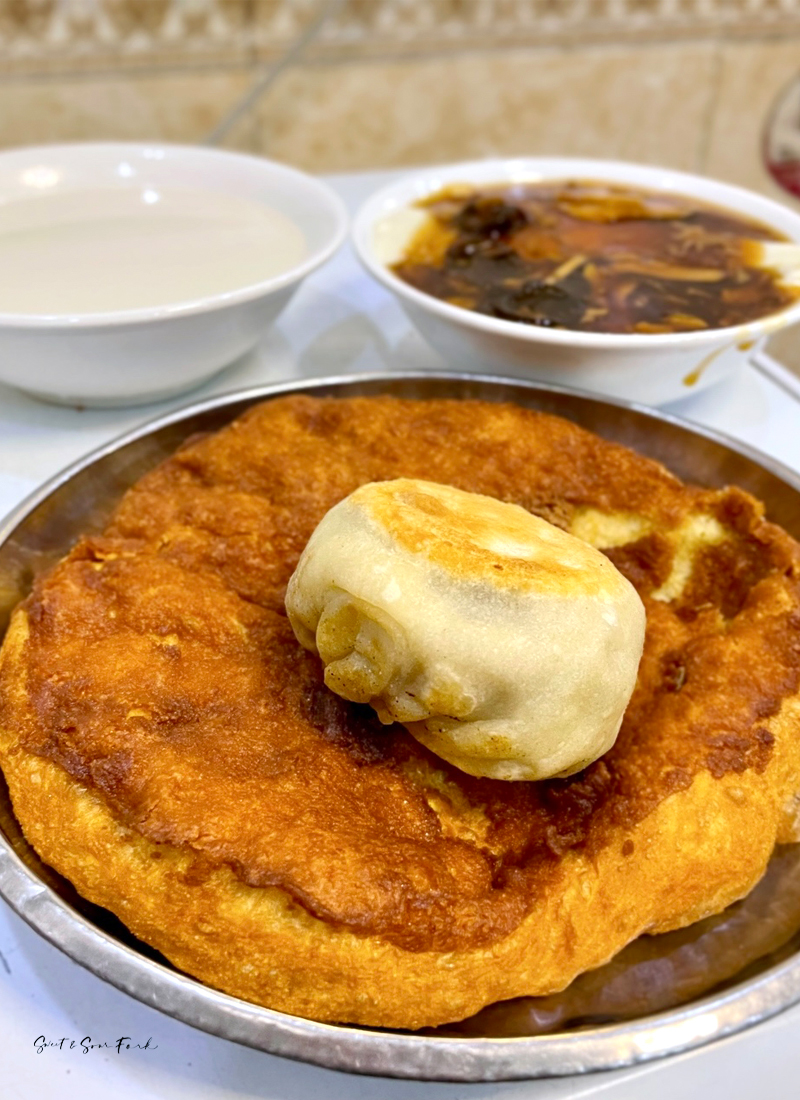
Sugar Pancake 糖油饼 (3 RMB)/Doornail Meat Pie 门钉肉饼 (5 RMB)/Soy Milk (3 RMB)
If you only get a single thing here, make it the Sugar Pancake 糖油饼 (3 RMB). Dipped in a layer of sugar and freshly fried, this golden, puffy pastry is coated with the most addictive layer of caramelised sugar that crumbles in the mouth, contrasting with the slight chewiness of the hand-stretched dough. If you’re more of a savoury person however, don’t miss the Doornail Meat Pie 门钉肉饼 (5 RMB), a stodgier cousin of the hearty meat bun, served pan-fried. Wash it all down with some freshly-ground warm Soy Milk (3 RMB).
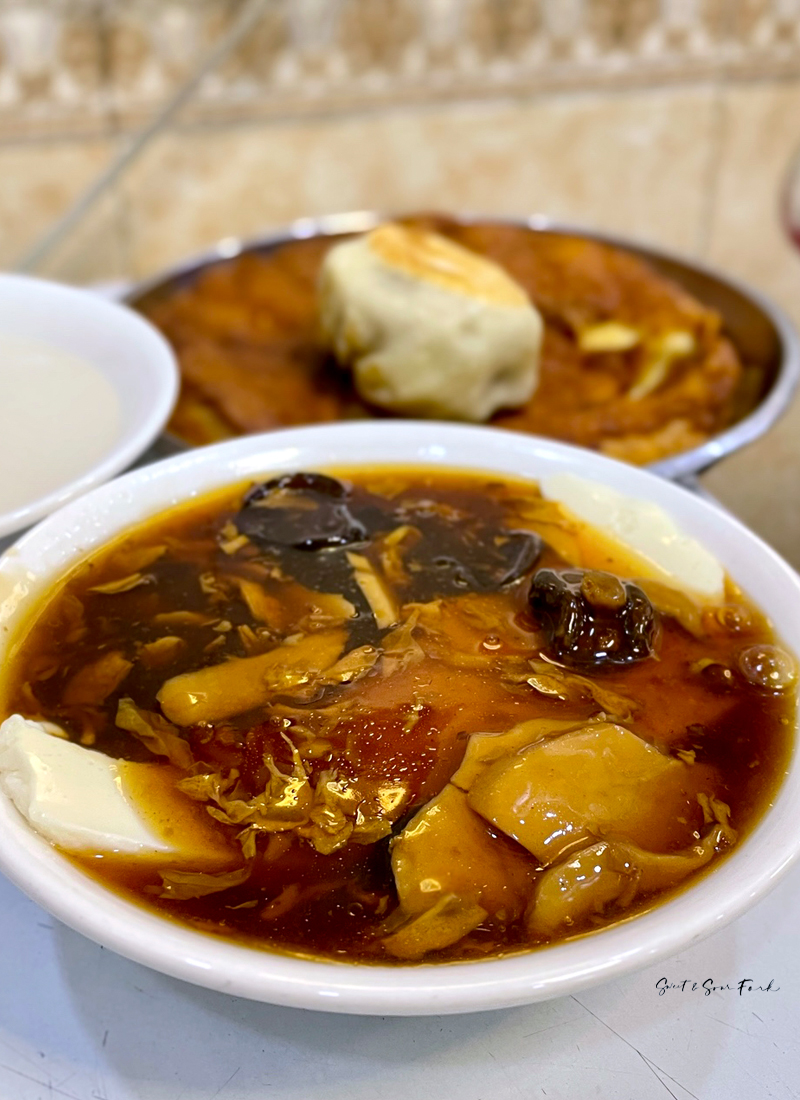
Savoury Silken Tofu 豆腐脑 (4 RMB)
The other MVP here is the Savoury Silken Tofu 豆腐脑 (4 RMB), which is actually known as ‘tofu brains’ in China (no idea why that term never took off in the west). Don’t judge a book by its cover, and a dish by its sloppiness, because this is the most amazing thing – the wobbly, delicate tofu suspended in a thick, umami-heavy gravy tinged with peppercorns, and accompanied by seasonal mushrooms. If you like hot and sour soup, you will love this.
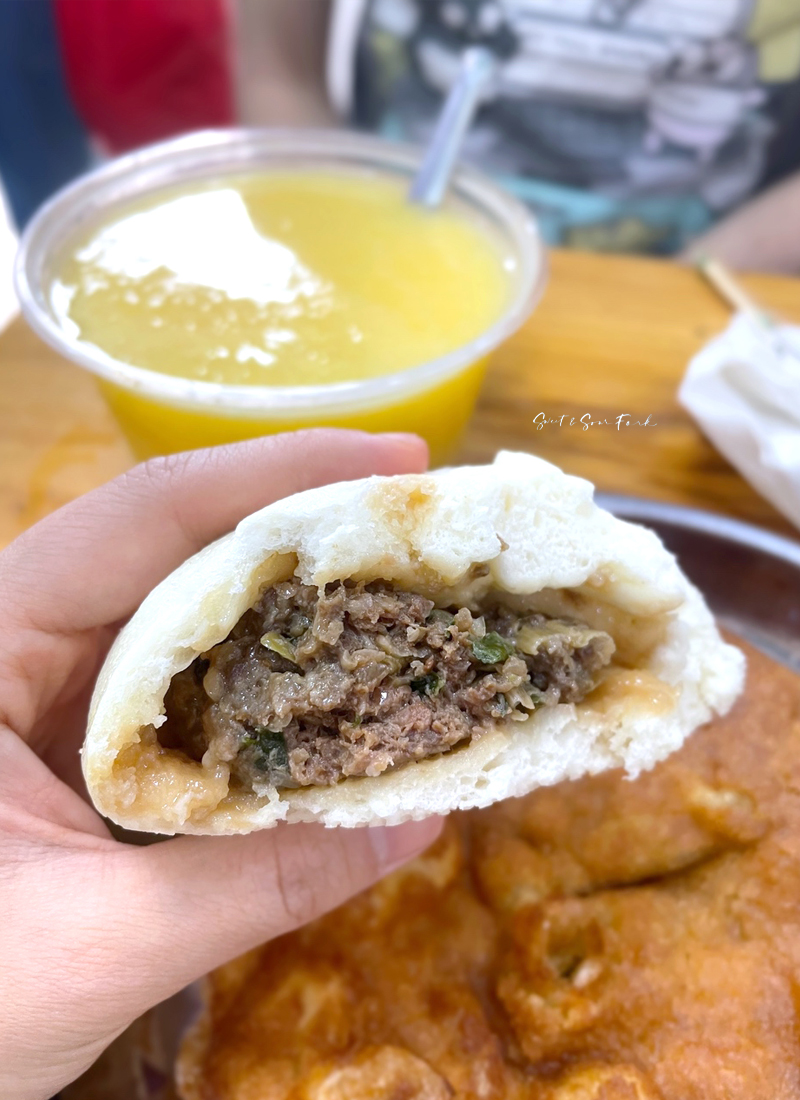
Beef Bun 牛肉包子 (3 RMB)/Millet Porridge 小米粥 (3 RMB)
We came back another day for more of the sugar pancake, but I also tried their Beef Bun 牛肉包子 (3 RMB), which is a little less remarkable and their other items, though still delicious and an absolute steal. The Millet Porridge 小米粥 (3 RMB) however you can skip, being pretty bland, though I suppose it is an option if you don’t want the tofu or soy, but still want something soupy.
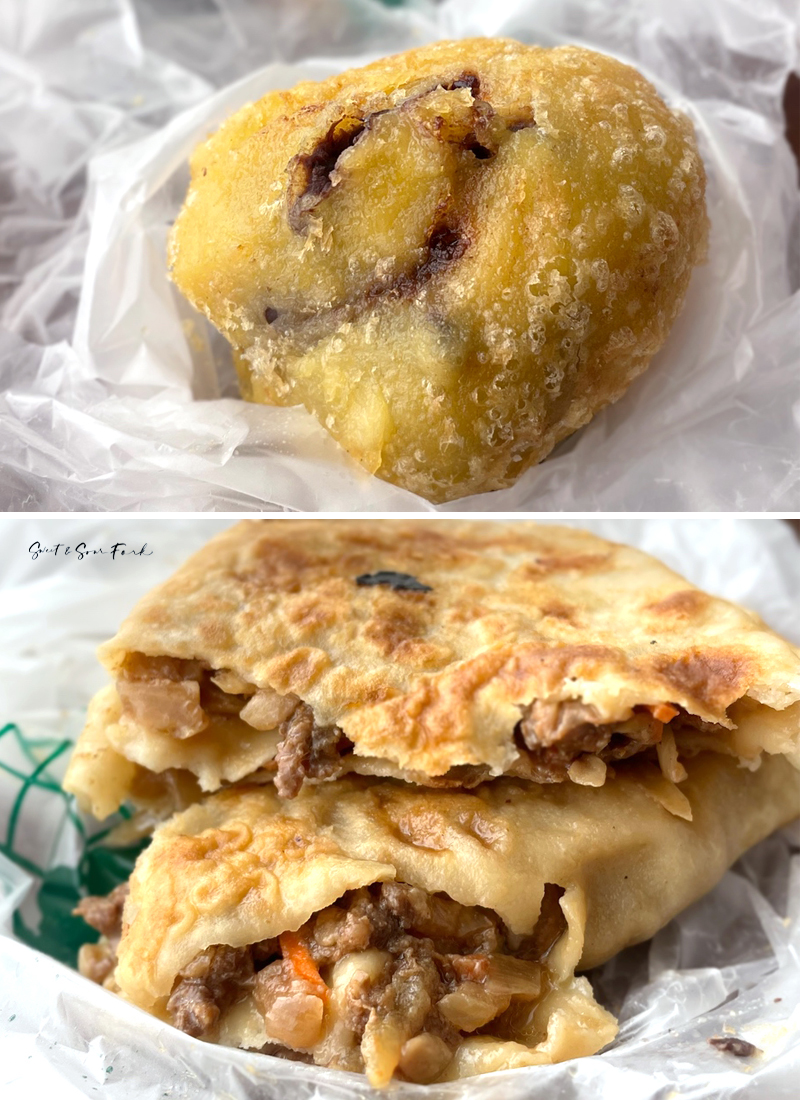
Fried Sticky Rice (4 RMB)/Meat-Filled Pastry 烧饼夹肉 (10 RMB)
I made it back a THIRD time in the span of 6 days, this time for takeaway because I wasn’t very interested in jostling for one of the 12 spots in a space smaller than my bedroom. The Fried Sticky Rice (4 RMB) – there’s not a specific menu listing for this, it was just sitting on the counter – was absolutely insane, the contrast between the blistered crunch of the outside, and the chewy centre is ecstasy for texture-lovers everywhere, and the whole concoction is sweetened with a nutty red bean paste. Similarly, the Meat-Filled Pastry 烧饼夹肉 (10 RMB) is another delicious item that’ll get you through to dinner, the dough stuffed with an aromatic mixture of meat and veggies, before being fried on the griddle – not unlike a borek.
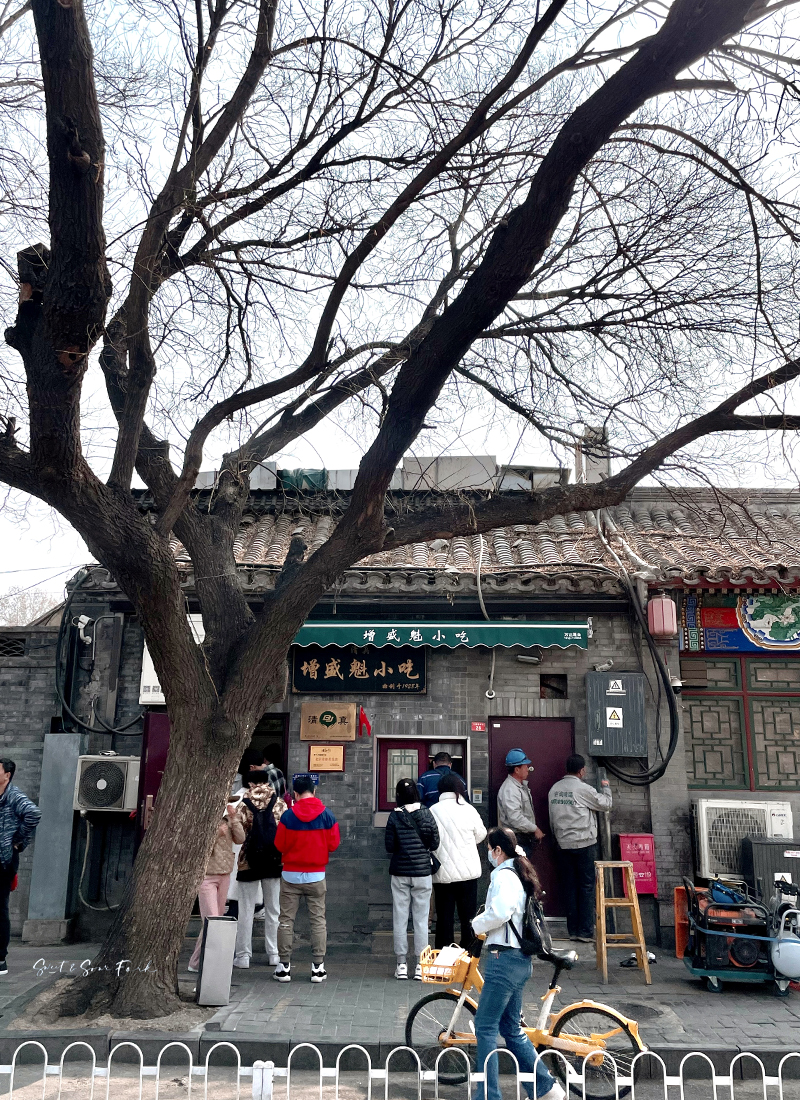
Zeng Sheng Kui (增盛魁)
And just in case you have trouble finding the place, here’s the exterior – just look for the crowd at the entrance of a small alleyway.
Beijing – Tier A Foods
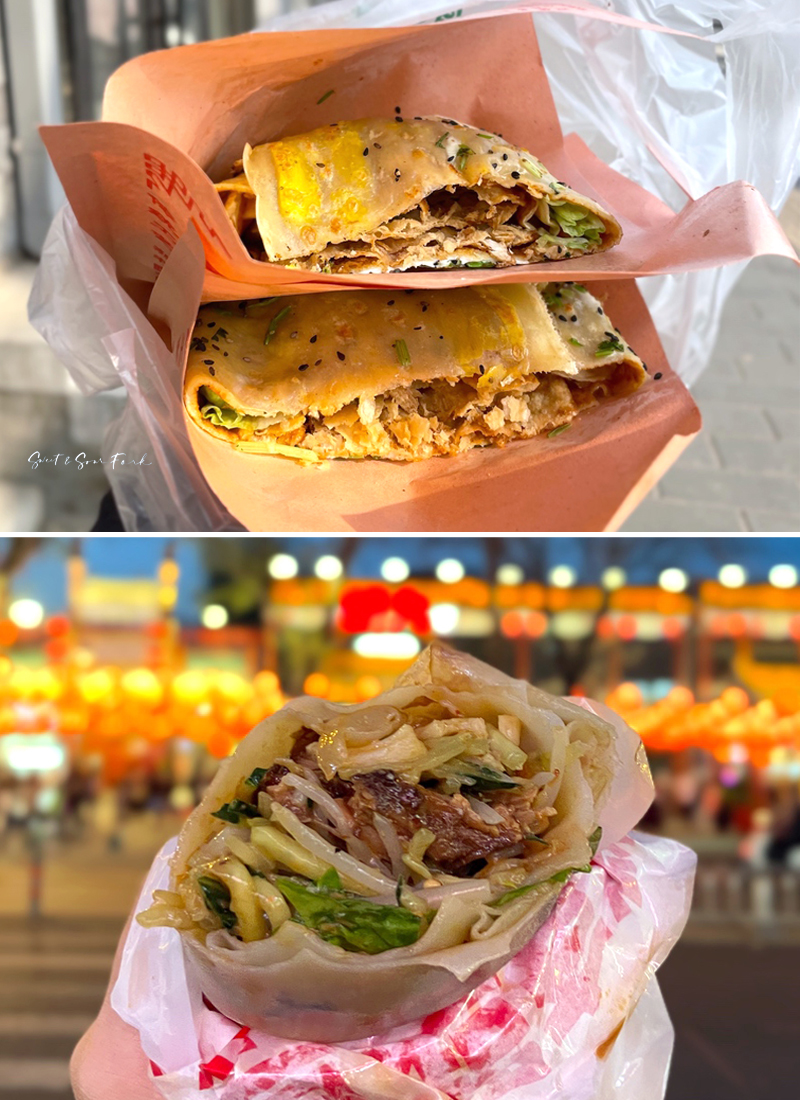
Jian Bing (9 RMB)/Shou Juan 手卷 (15 RMB)
China’s north is known for its pastries (I mean, see above), and I’ve had some truly excellent ones in my week in China’s capital. The Jian Bing (9 RMB) is a breakfast classic, the thin, crispy crepe stuffed with egg, crispy crackers, and a sweet and savoury sauce. Sounds weird, but trust me – it hella works. The other one here is a Shou Juan 手卷 (15 RMB), aka a hand wrap. I saw this on the way to dinner, and it looked so good I couldn’t resist, even though it was the size of a large burrito and completely ruined my appetite. They basically take a giant sheet of sticky rice paper, and top it with your choice of meats, veggies, and condiments. We’re talking grilled calamari, chewy tofu, even a handful of fried noodles if you want, all slathered in a spicy, savoury dressing with fresh veggies. The fillings are then tossed, and wrapped up into a ridiculously flavour-packed parcel that is all sorts of crunchy, chewy, and saucy. I really cannot overstate how delicious and moreish this is.

Minced Garlic Crawfish (8 RMB/crawfish, medium size)
If you head to Gui Jie, aka Ghost Street, you’ll find that it’s the place in town to get your crawfish on. Pretty much every other restaurant is a specialty crawfish restaurant, but the most famous of them all is Hu Da 胡大, which has lines up to 2 hours long most nights at its original location. But not to worry – they’ve literally got something like 4 branches in the same street, so if you just head to one of the other ones like we did, it’s about a 10-minute wait. Anyway, this stuff is so worth it. The Minced Garlic Crawfish (8 RMB/crawfish, medium size) are an absolute dream, cooked in a ridiculous amount of aromatic garlic sauce that gets in all the little crevices of the crustacean. Make sure you get a side of Hand-Pulled Noodles (13 RMB) to toss in the sauce after you’re done. And with the crawfish comes excellent service – not only do they show you how to crack them open, they even offer to do it for you if it looks like you’re struggling (ie: if you’re my husband).
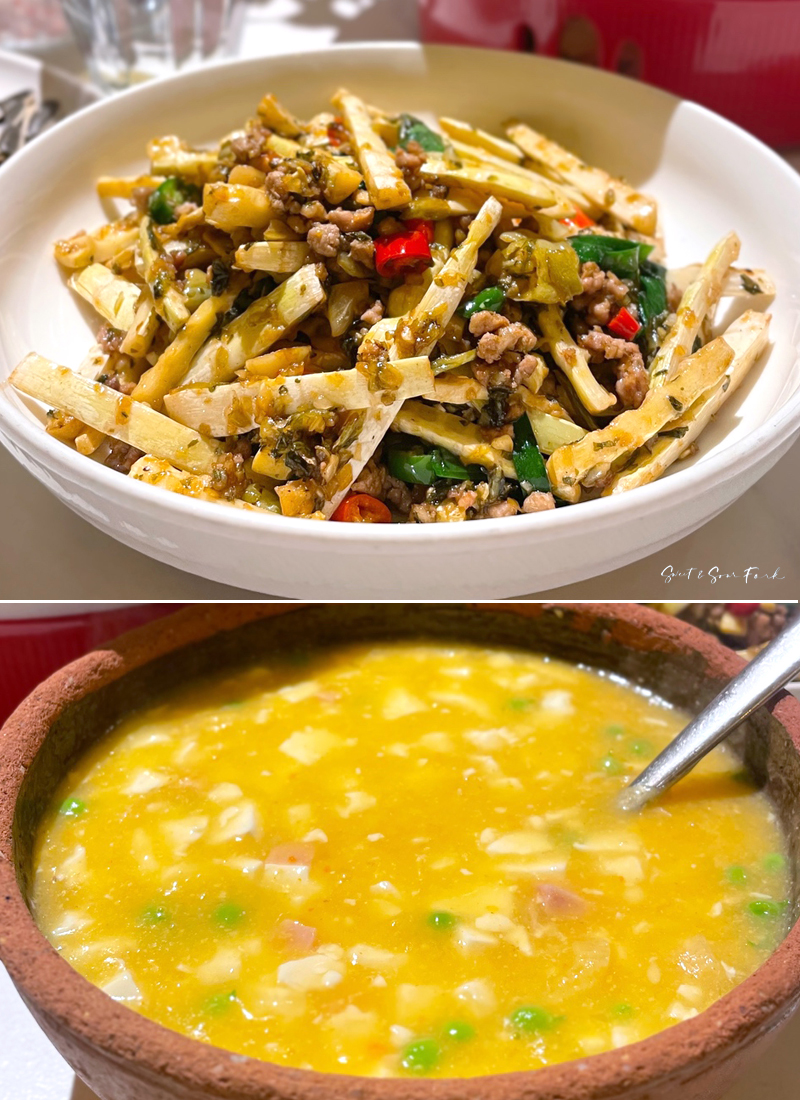
Fried Crispy Bamboo Shoot with Pickled Vegetables (42 RMB)/Bean Curd with Bamboo Fungus and Crab Roe (49 RMB)
Unfortunately humans cannot live on crawfish and garlic alone, so I also got some sides to round out the meal. The Fried Crispy Bamboo Shoot with Pickled Vegetables (42 RMB) was phenomenal, the crunch of the fresh bamboo contrasting with savoury mince, tangy pickles, and just the right amount of spiciness. It is an umami flavour bomb. Similarly excellent was the Bean Curd with Bamboo Fungus and Crab Roe (49 RMB) – a thick, comforting stew of tender tofu braised in aromatic seafood flavours.
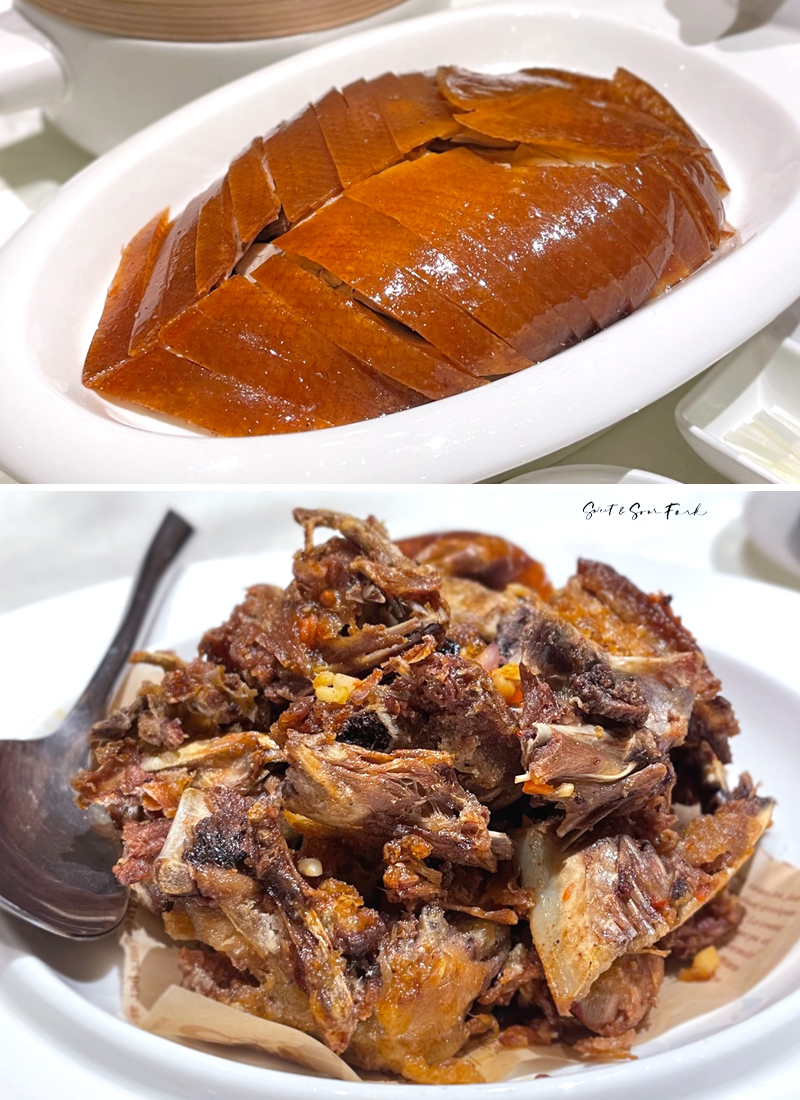
Peking Duck/Salt and Pepper Duck Bones
Whilst in Beijing, my family took us out for some excellent meals. We of course had Peking Duck, which as you’d expect is fantastically juicy, and featured a perfectly rendered layer of fat between the meat and the crisp skin. I was also a huge fan of the Salt and Pepper Duck Bones, which are deep fried in loads of seasoning, and makes for a very addictive nibbling snack.

Salt and Pepper Pigeon/Braised Pork 红烧肉
For a lighter alternative to duck, try the Salt and Pepper Pigeon, which boasts a much more delicate version of the same tender flesh and crispy skin. Or if poultry’s not your thing, another must-try classic Beijing dish is Braised Pork 红烧肉, consisting of pork belly slow-cooked in aromatic soy sauce until it’s melt-in-the-mouth buttery.
Beijing – Tier B Foods

Instant-Boiled Mutton 涮羊肉 (158RMB)
Though we’re most familiar with the spicy Sichuan-styled hot pot in Australia, there’s actually dozens of different variations all across China. And in Beijing, Instant-Boiled Mutton 涮羊肉 is the most commonly seen type. Instead of a rich, often spicy broth, the base here consists of a very thin mutton-based stock with some aromatics thrown in. Compared to what I’m used to (aka Sichuan-styled hot pot), this feels incredibly bland in comparison. But I will admit that at 158 RMB for a two-person set meal consisting of plenty of meat and veg is a great deal, and that the accompanying sesame-based dipping sauce is delicious, and improves things tremendously.

Shao Rou Jia Bing 烧饼夹肉/Enormous Pork Bun Burrito Hybird
Now, onto more pastries! The Shao Rou Jia Bing 烧饼夹肉 is Beijing’s answer to the Rou Jia Mo, with an indulgent flaky pastry – as opposed to the usual doughy kind – filled with slow-cooked pork. Apparently it was an Empress Cixi favourite! I also have a soft spot for this enormous pork bun burrito hybrid, which we picked up for about 4RMB and got us through our Great Wall trek single-handedly.
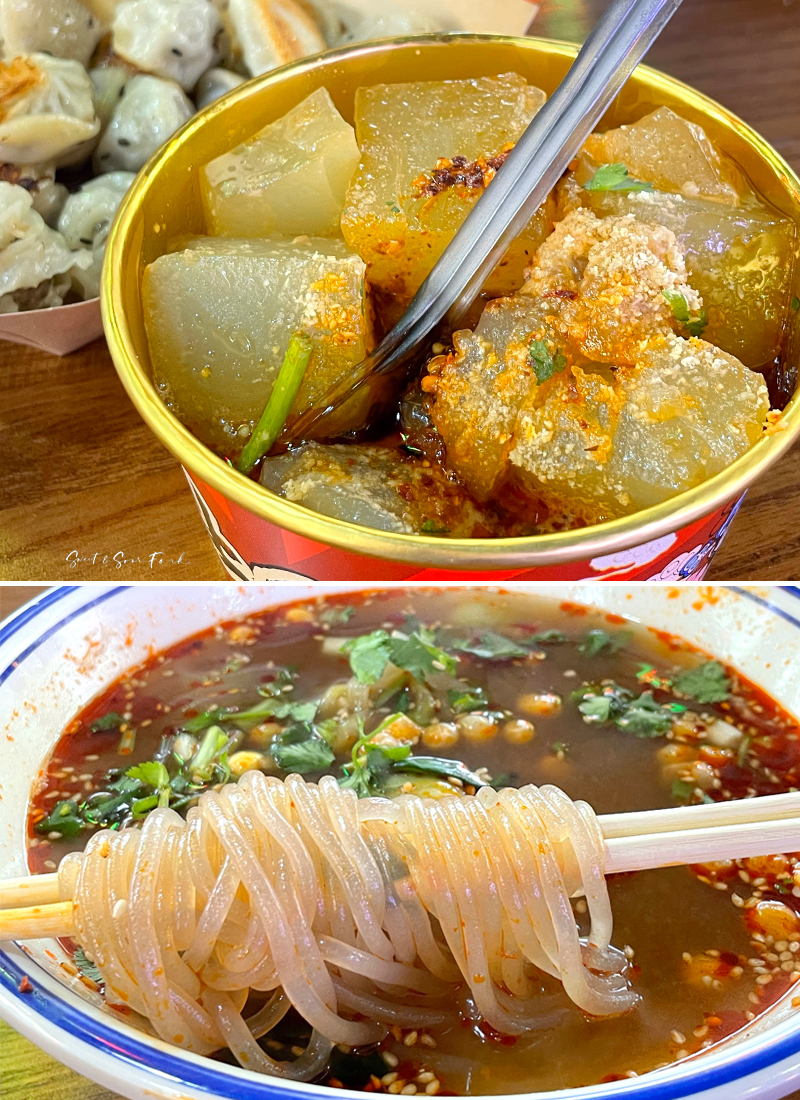
Chao Liang Fen 炒凉粉 (20RMB)/Spicy Sour Noodles 酸辣粉 (18RMB)
Though Chao Liang Fen 炒凉粉 (20RMB) directly translates to stir-fried cold rice noodles, it’s actually a dish of chunks of wobbly, sticky mung bean cakes, in a spicy and slightly vinegary sesame sauce. A little different, but very addictive. More well known is the Spicy Sour Noodles 酸辣粉 (18RMB), with a broth that lives up to its name, and sweet potato noodles so chewy they’re a choking hazard.
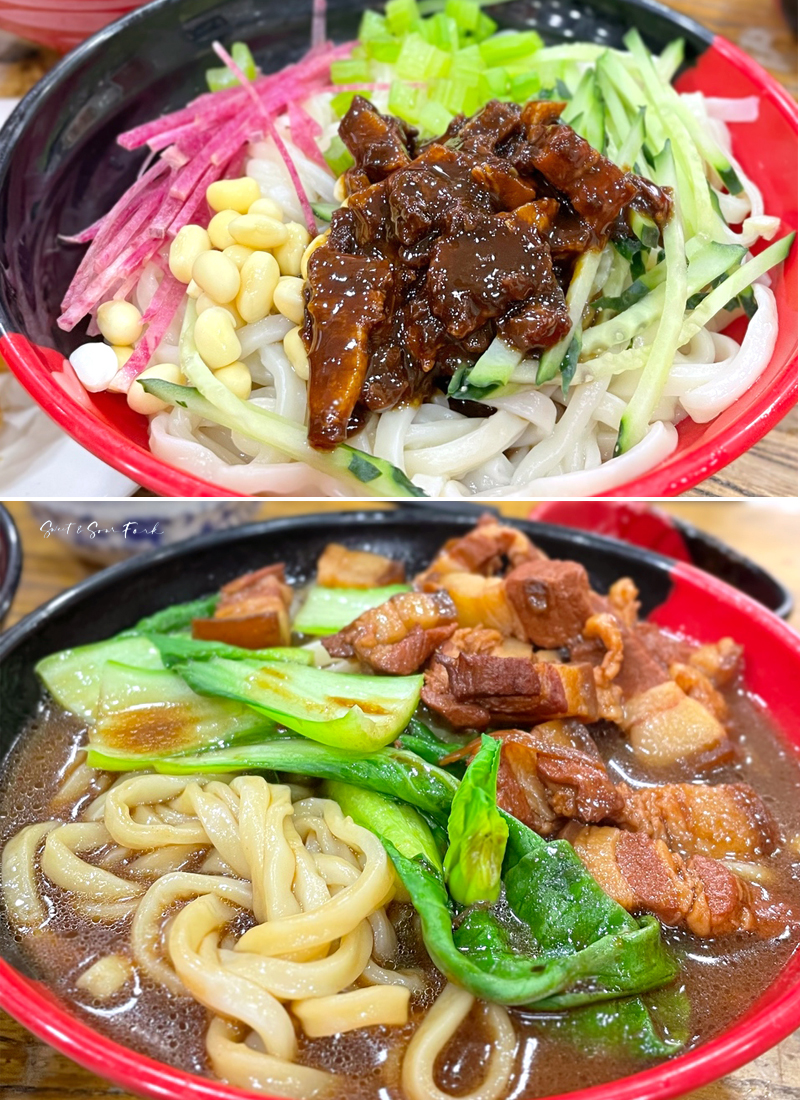
Zha Jiang Mian 炸酱面 (22RMB)/Braised Pork Noodles 红烧肉面 (28RMB)
Now these are noodle dishes you can get easily, even in Melbourne. The Braised Pork Noodles 红烧肉面 (28RMB) is a classic comfort food dish, with thick hand-pulled noodles in a rich and warming broth, and lots of fatty pork belly. And Zha Jiang Mian 炸酱面 (22RMB) is arguably the most famous Beijing noodle dish of all, tossed through with a chunky meat sauce, and plenty of fresh crunchy veggies. And yes, it is the predecessor to the Korean Jjajangmyeon.
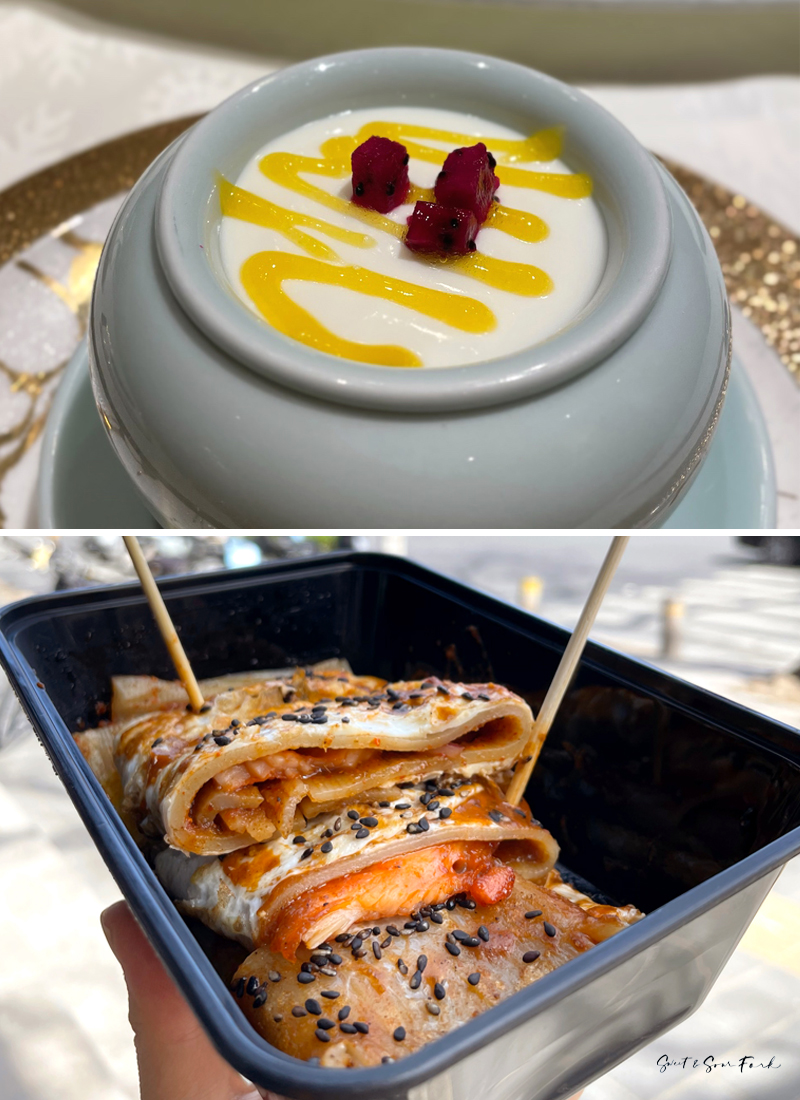
Yoghurt/Liang Mian 凉面
Beijing is big on yoghurts, and if you go to a nice restaurant sometimes they’ll even make their own in-house. Made with a rice wine starter, the yoghurt is usually smooth and light, and often served with Chinese sweet things, such as jujubes and fruit. Also, Beijing food is rife with misnomers; first stir-fried rice noodles that aren’t stir fried rice noodles, next the Liang Mian 凉面 that’s not cold noodles, but a thick chewy crepe, rolled around a whole heap of spices with your choice of filling. With a heavy dose of cumin and chilli, the vibes almost lean South Asian.
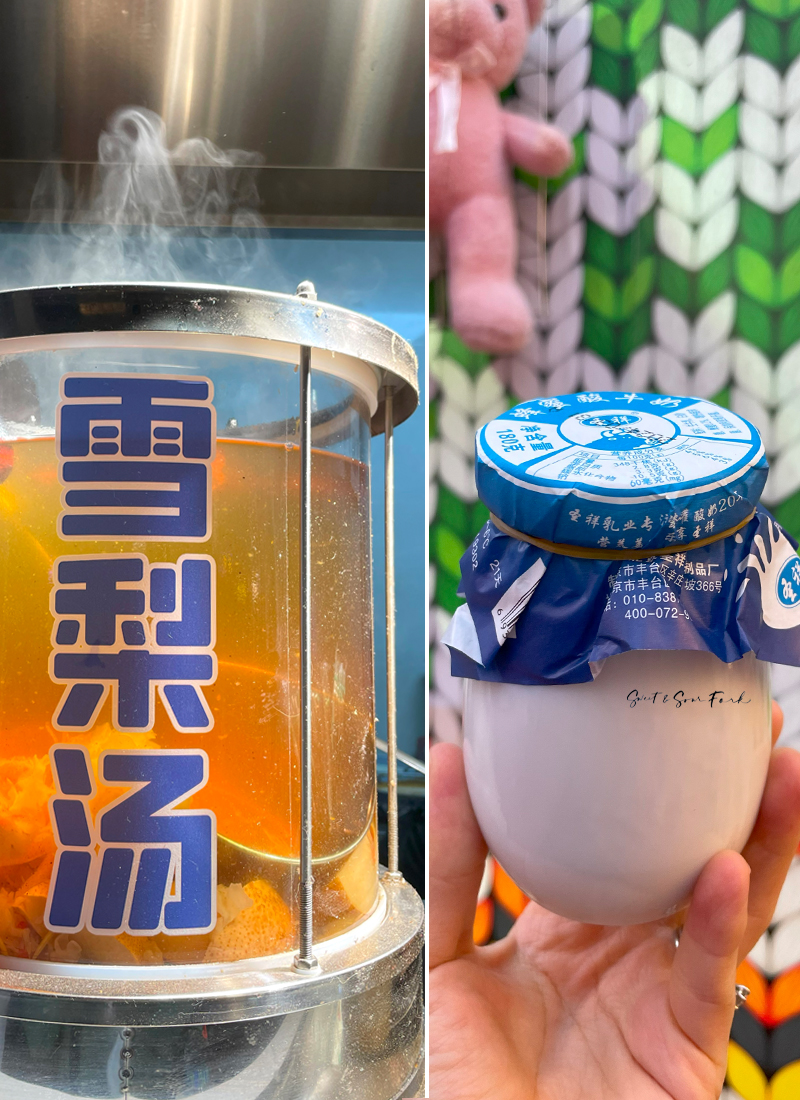
Drinking Yoghurt/Snow Pear Tea
Another well-known Beijing product is their Drinking Yoghurt, which you can get on every street corner, and is sweet and creamy with just the right amount of tanginess. And on colder days, you might find vats of steaming hot Snow Pear Tea, which is light and floral, with warm nutty notes from the jujubes and white fungus added to the brew.
Beijing – Tier C Foods
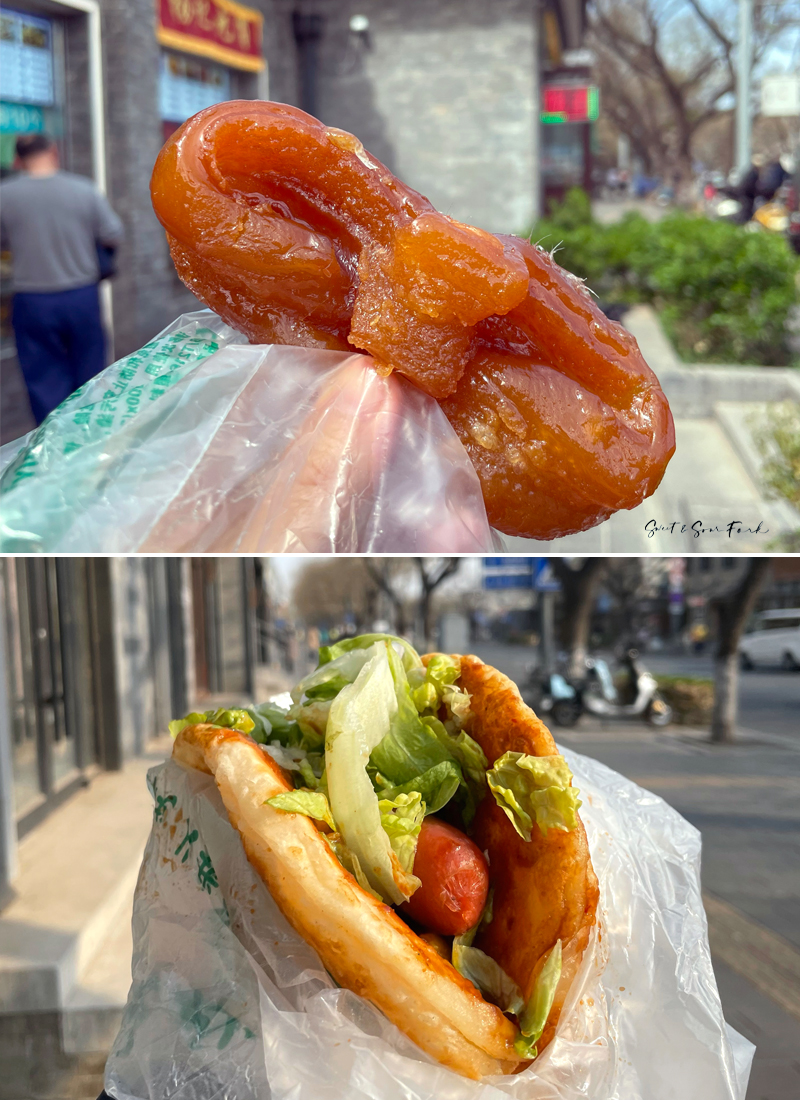
Tang Er Duo 糖耳朵 (3RMB)/Guan Bing 灌饼 (8RMB)
The Tang Er Duo 糖耳朵 (3RMB), aka the sugar ear, is a traditional Beijing sweet. And for once my grandpa wasn’t just being a weird old dude, going on about how Kunming does way better desserts than Beijing, because this is disgusting. Image a jalebi – crisp, syrupy, and delicious if you have one or two with a strong cup of tea – then take 20 of them and crush them into a dense ball of flour and sugar. There you have it. We ate a bite each and it went into the bin as fast as we could hurl it. If I get diabetes, we’ll know how it happened. Thankfully the Guan Bing 灌饼 (8RMB) was neither gross or unnatural; I just thought the flat bread filled with sausage, lettuce, and sweet soy sauce was rather boring. Chris enjoyed it though, and you can always choose different toppings if you’re not keen on frankfurters.
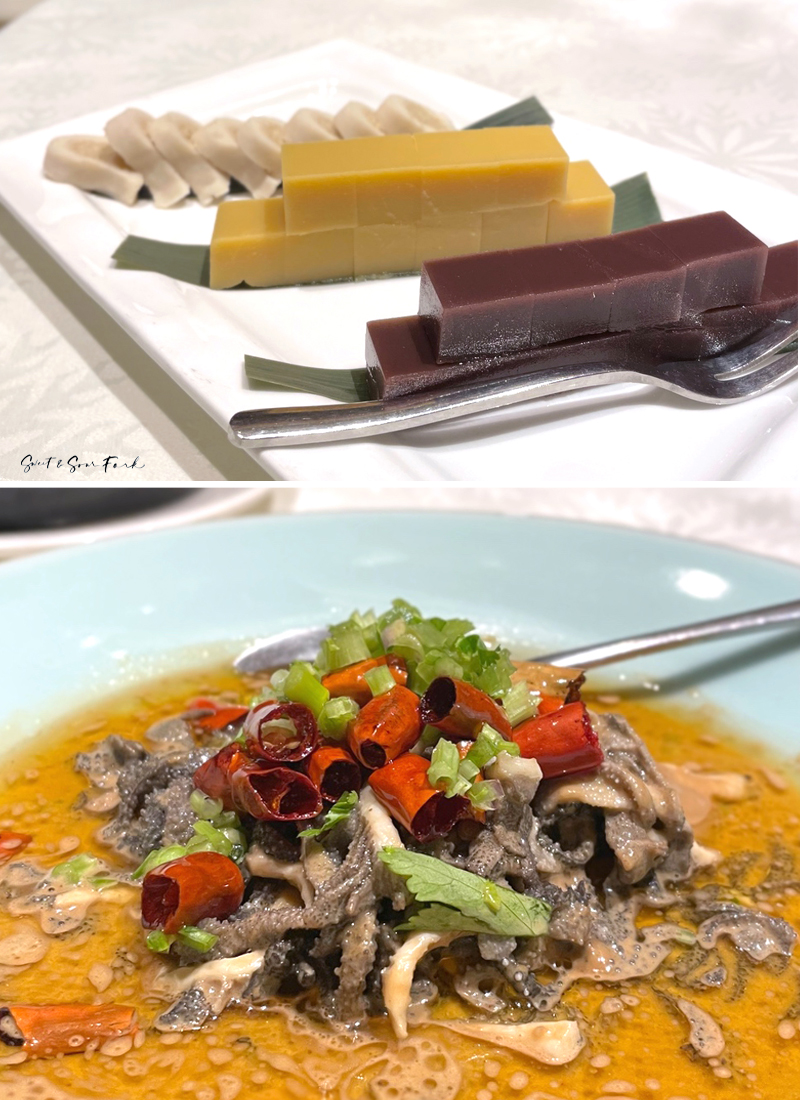
Red Bean Cake/Green Bean Cake/Lǘ Da Gun 驴打滚/Bao Du 爆肚
More on how Beijing desserts suck: the classic Red Bean Cake and Green Bean Cake were dull to say the least, though I did unexpectedly enjoy the Lǘ Da Gun 驴打滚,a whimsically named dessert (it means donkey rolling on the ground) of sticky rice and red bean paste. I was also underwhelmed by the Bao Du 爆肚, which was a bland and chewy dish of tripe, even with lashings of sesame dressing.
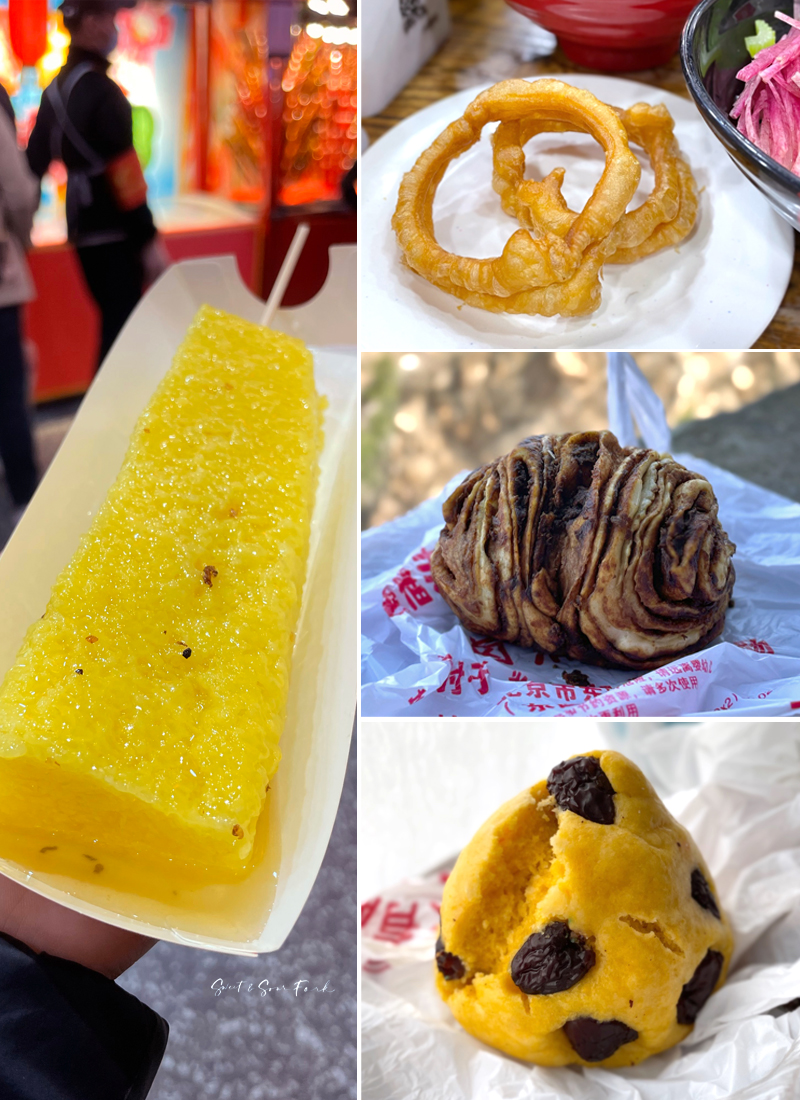
Chrysthanthemum Cake (15RMB)/Jiao Quan 焦圈 (2RMB/ea)/Wo Wo Tou 窝窝头 (6RMB)
One last whinge about the pastries: I was suckered into the Chrysthanthemum Cake (15RMB) because of how pretty it looked, but honestly, it was just a giant rice cake soaked in lightly floral syrup. Jiao Quan 焦圈 (2RMB/ea) were just fried rounds of crispy batter that is surely eaten more for texture than taste, and the Wo Wo Tou 窝窝头 (6RMB) is a dense cornmeal dumpling that couldn’t be improved even with the addition of jujubes. I gotta say, as stubborn as he can be with his opinions, my grandpa seems to be right about the sweets in Beijing.
Interlude – Hunan Eats (absolute bangers)
My mum is always real smarmy about how good Hunan food is (that’s where she was born), and as much as I hate to admit it, she is totally right. This was the last big proper meal we had before leaving China, and despite being completely fooded-out by this point, it still stood out as one of the best meals of the trip. So there – mum, you happy now?
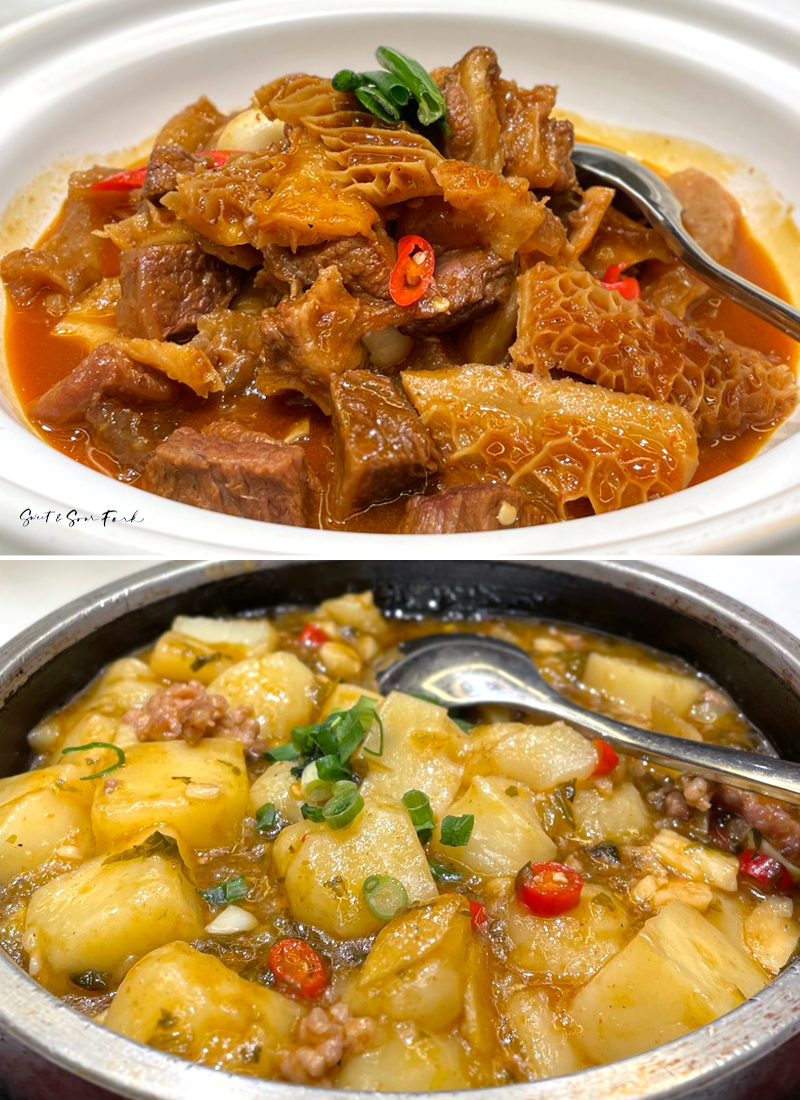
Braised Beef, Tripe, and Tendon/Stir-Fried Rice Tofu
The first dish here is Braised Beef, Tripe, and Tendon, and I actually cannot overstate how delicious this is. The flavours are so rich and deep, and the meats just melt in the mouth, especially the unctuous collagen-laden tendon. Even if you don’t like offal, this is the dish that will change your mind – I have zero doubts. For the truly reticent however, I would recommend the Stir-Fried Rice Tofu, which actually isn’t tofu at all, but cubes of tender and slightly sticky rice cakes. Stir-fried with fresh chillis and pork mince, the entire dish takes on the smoky flavours of the wok, and is simultaneously thrilling yet comforting.
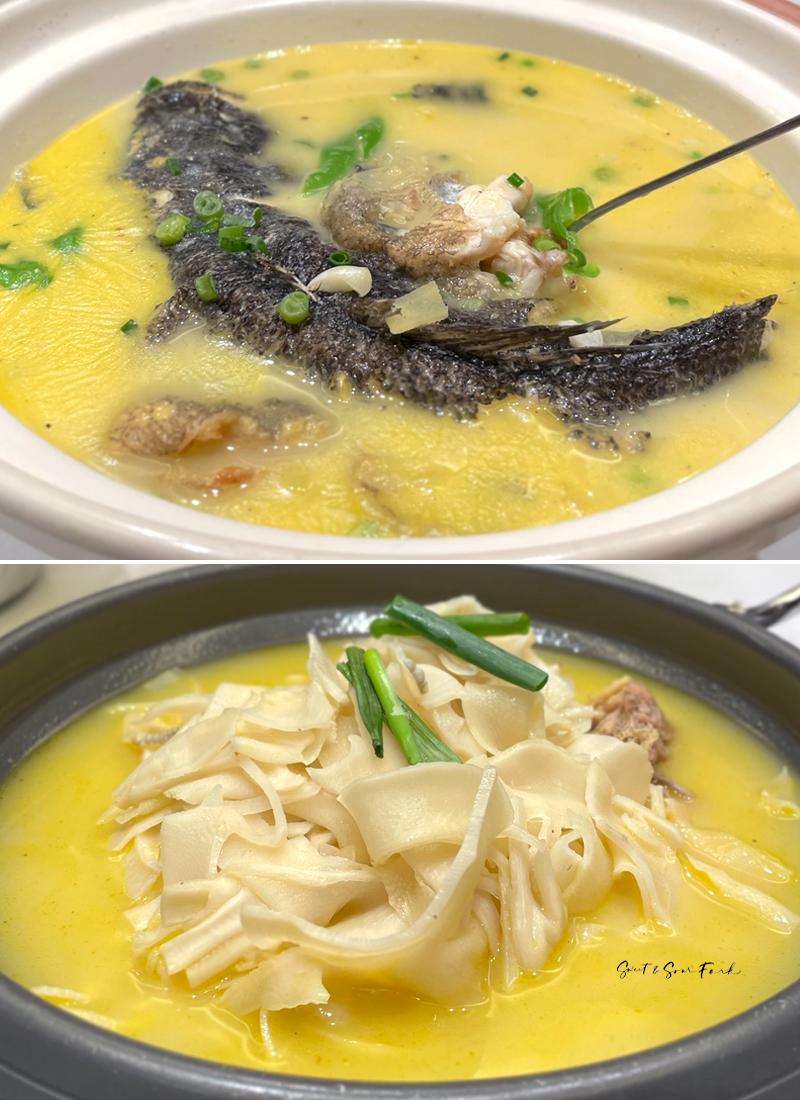
Fish Soup with Perilla Leaves/Bamboo Braised in Chicken Stock
On the lighter end is a Fish Soup with Perilla Leaves – an unexpected combination that turned out to be actually genius. The slightly herby perilla neutralises any pungency from the fish, resulting in a soup that is as delicate and restorative as the fish itself. The Bamboo Braised in Chicken Stock is similarly gorgeous, the tender crunch of the bamboo shoots taking full advantage of the umami of slow-cooked chicken stock.
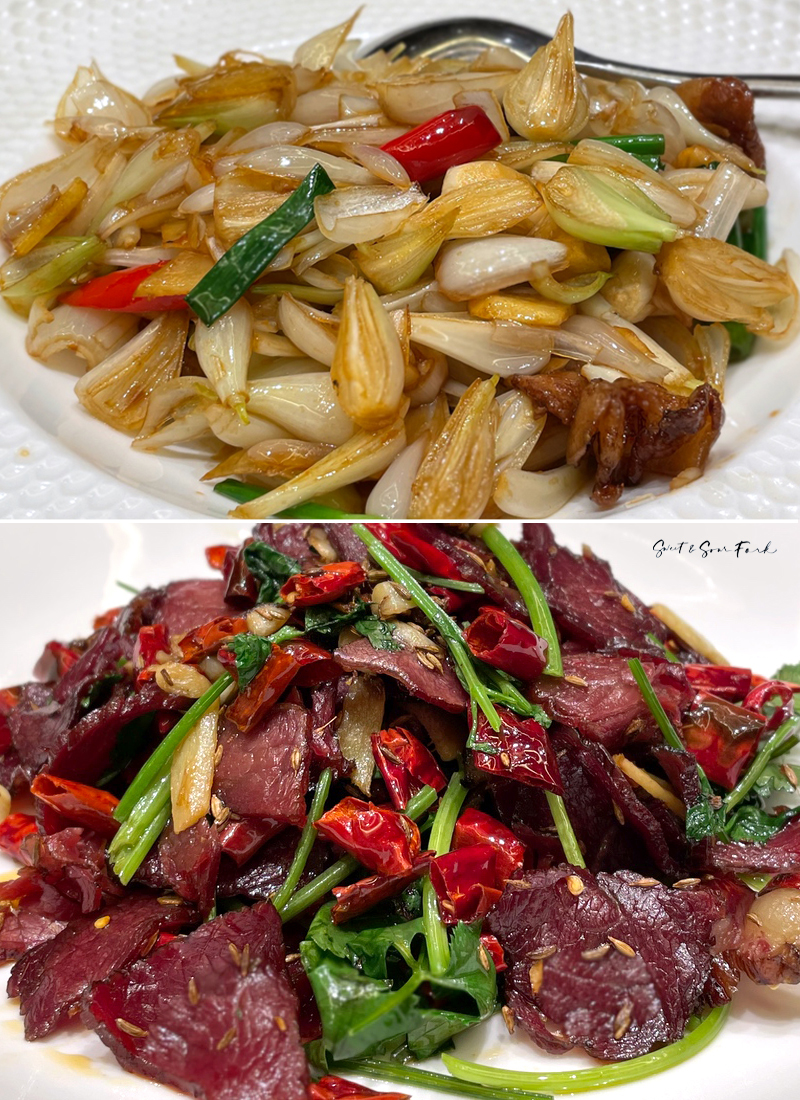
Stir Fried Dried Smoked Beef
Ok I will admit I do not remember what vegetable this actually is, but I can tell you it’s a common one in China that I’ve had before, and tastes like little leeks, with a hint of fennel sweetness. The other one is a classic Stir Fried Dried Smoked Beef, which is neither too tough nor salty (quite common), but has a delicious robust meatiness to it that goes great with a bowl of rice.
Beijing – Miscellaneous Eats
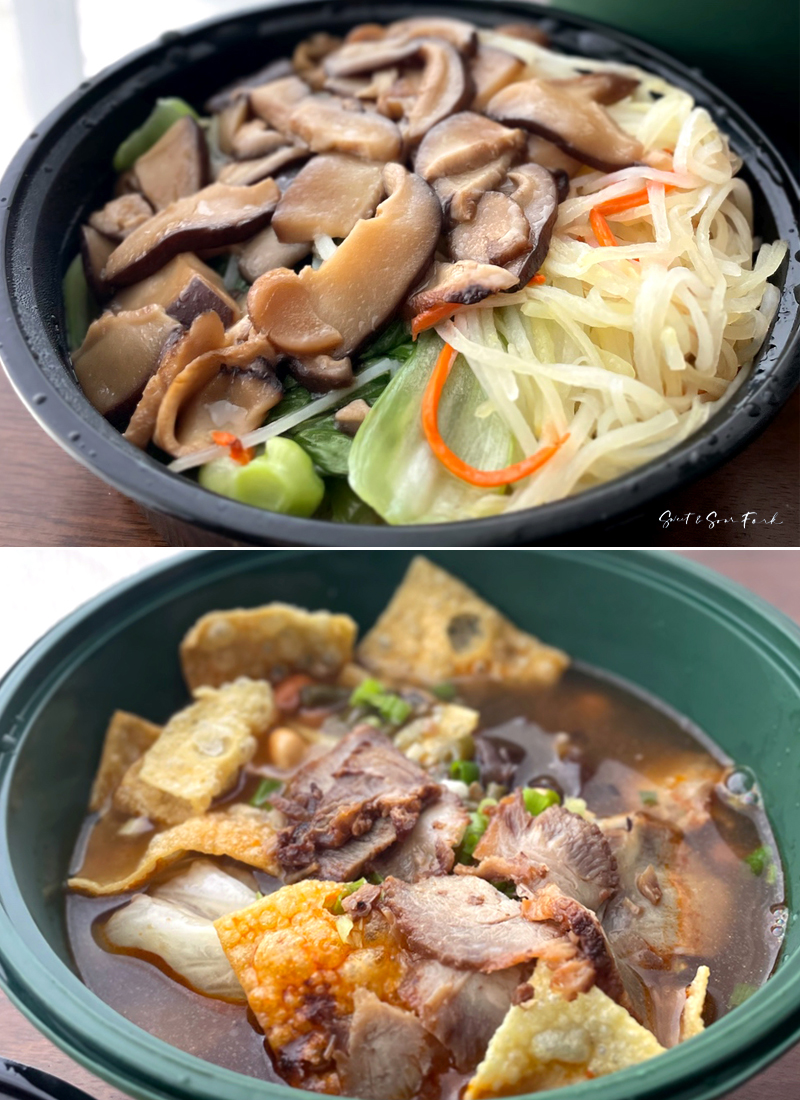
Clay Pot Rice/Luo Si Fen 螺丝粉
A couple other little things I ate whilst I was in Beijing. We had some traditional Guangdong Clay Pot Rice, as well as the controversial Luo Si Fen 螺丝粉 – a rice noodle dish cooked in a stock based on river snails. Some people complain about the pungent odour of the soup, but I personally thought it wasn’t all that confronting at all. Or maybe this was a dodgy fake version – who knows?

Squirrel Fish
Squirrel Fish is a Jiangsu dish you can get easily enough in Australia, but still warrants a mention because it looks cool and tastes awesome. You get a fish, cut it into that distinctive cross-hatch style, and then deep fry the whole thing and drench it in sweet and sour sauce. Now this is living.

Double Shake Shack Burger (69RMB)/Chicken Burger (48RMB)/Chocolate Milkshake (42RMB)
And ok fine, we had Shake Shack whilst we were in Beijing. In my defence, we can’t get this in Australia either. And I do not have a single regret, even if the meal here cost about as much as we’d spend in 2 days if we just ate local food. The Double Shake Shack Burger (69RMB) was just the right amount of meaty, complete with juicy centre and crispy, fat-sizzled edges, and the way the cheese melts into the crevices is near religious. Finish off with a soft brioche bun and fresh salad, and you have yourself an amazing classic burger. The Chicken Burger (48RMB) and Chocolate Milkshake (42RMB) were both also excellent, but I was way obsessed with the OG.

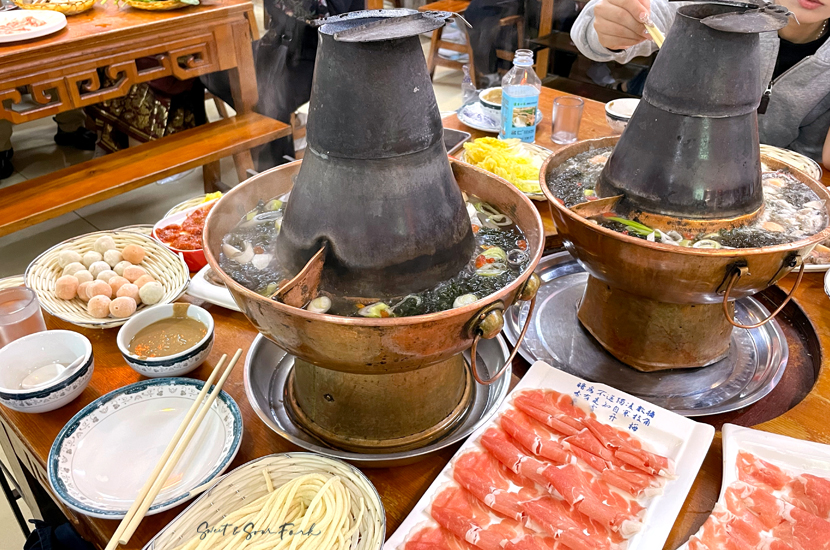
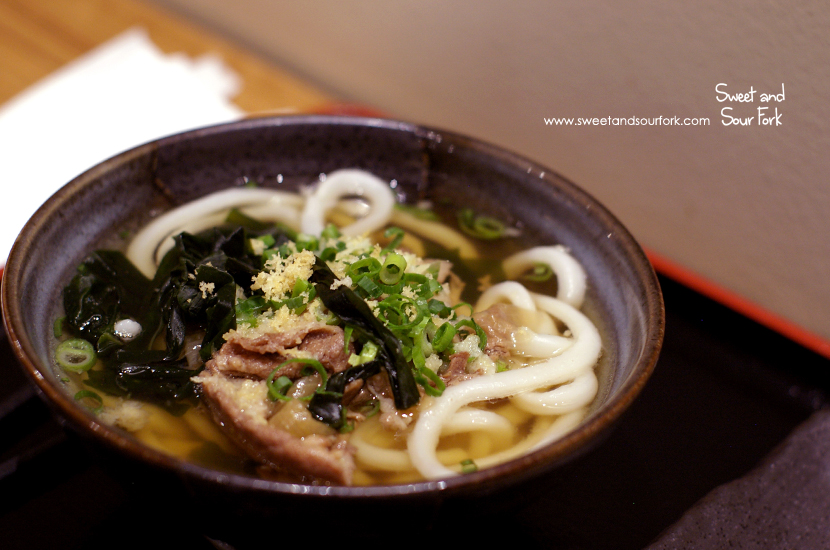
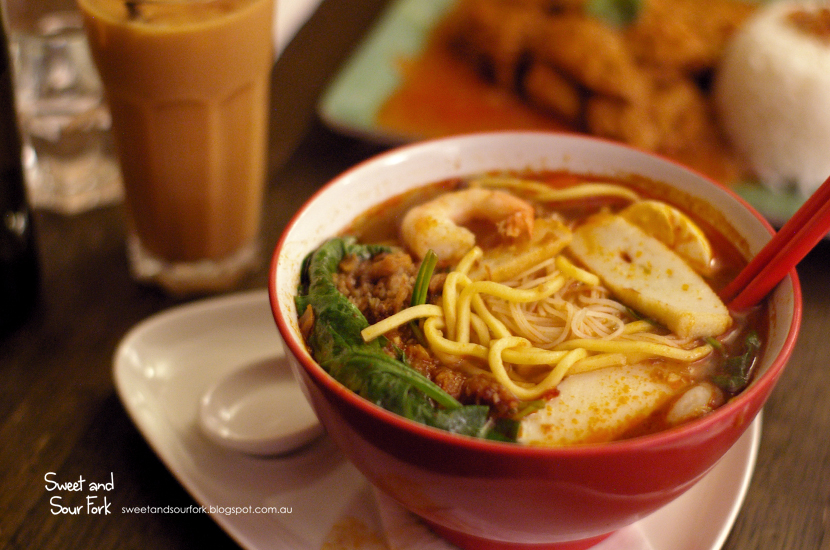
No Comments